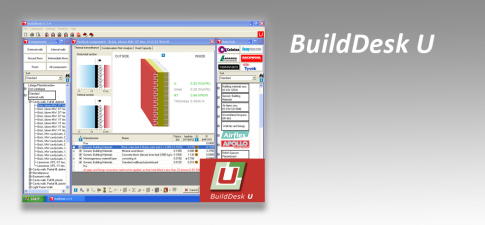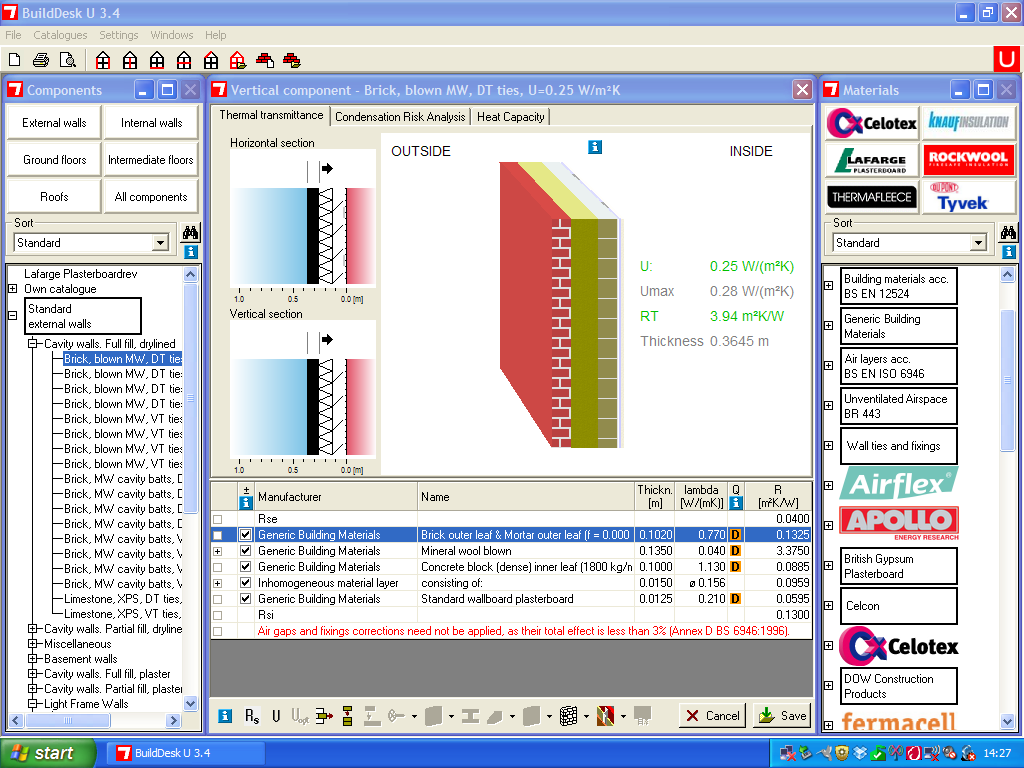BuildDesk U
Professional software for U-value calculations
In just minutes BuildDesk U can help you calculate accurate U-values for a wide range of building constructions. It also provides you with specific information regarding key aspects of building physics, such as calculation of surface temperatures and a Condensation Risk Analysis.
What users say
We carry out anonymous surveys of our users to get their true feelings. Here is some of their feedback:
‘Good program, does what it says, nicely laid out, good visual presentation while working and end result.’
‘Overall, for first-time user, the programme is easy to use.’
Users found that BuildDesk U allowed them to calculate U-values for the elements they needed. They also found the range of template constructions was good. Many users give printouts from BuildDesk U to clients and regulators.
Independently reviewed
BuildDesk U 3.4 has been independently reviewed by the Welsh School of Architecture, Cardiff University as part of a European-funded project – Delivering Low Carbon Buildings Cymru.
Our software was highly rated for usability and value for money.
Some quotes from the review:
The user can easily construct a building element and accurately calculate the resulting U-value in a few minutes.
The graphical interface is easy to use. The drag and drop material library allows assembling construction elements in a matter of seconds and to see in real-time the changes in the U-value. The software has a straightforward axonometric view that also helps to identify construction layers and to spot possible errors.
BuildDesk U offers a simple approach for testing building components and thermal performances of materials. Users with a good technical background in heat transfer phenomena will appreciate many features of this tool.
Click here to read the whole review.
U-values Training
We offer 1 day training in using BuildDesk U to calculate U-values according to the BR443 “Conventions for U-value calculations”. Through practical examples you will gain a good understanding of the BR443 and its practical implications for the calculation of U-values. Read more

